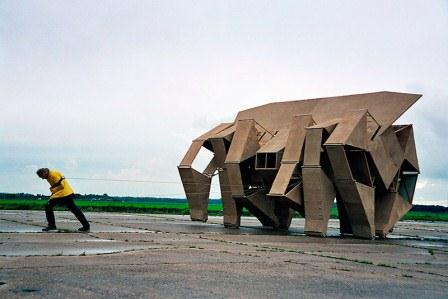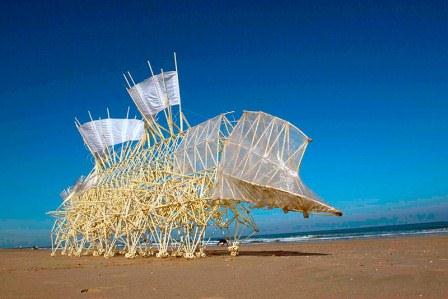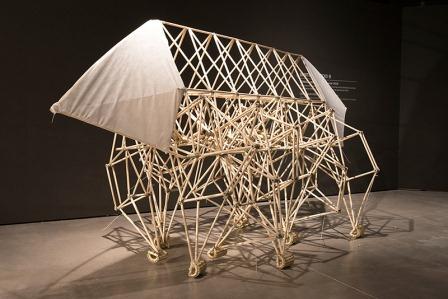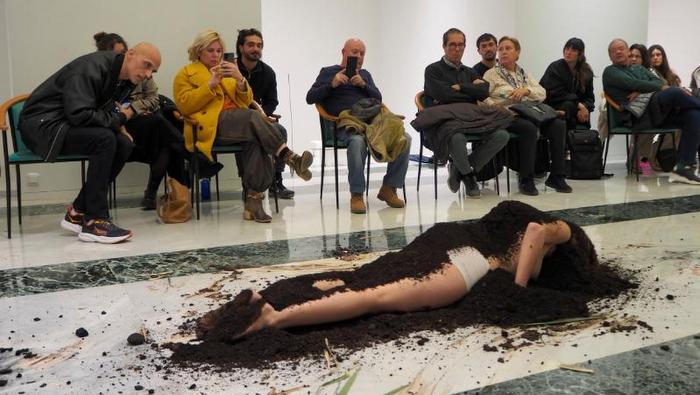
"The sea does nothing but rise, and this threatens to push the limits of our land to where they were in the Middle Ages. And we all know that in that tiny bit that we will shortly be able to do. Therefore, the big question is: how to get more grains of sand dunes to our? It would be great if we had some animals removieran sand of our beaches, thrown into the air, so that then the wind to take care of the dunes. " With these words, Theo Jansen (1948, Scheveningen) spoke for the first time about his creatures in a newspaper, then were just an engineering project with ecological message and aimed at curbing some of the effects of climate change. However, their Strandbeest, the beach beasts, began to have life beyond the hands of its creator.

Theo Jansen's kinetic sculptures are made of plastic tubes of electrical installations, rods, bottles ... industrial materials that take the rudimentary form of giant skeletons and runs thanks to the wind that blows along the Dutch beaches. These beings walking on the sand, evolve in generations and die after just a year, becoming fossil of the postmodern era. Jansen, who trained as an engineer and scientist at the Technical University of Delft, was fascinated with the book "The Blind Watchmaker" by British zoologist Richard Dawkins, the theory of evolution and natural selection of species, and he decided to create creatures increasingly self-sufficient and autonomous, able to survive and remain in their habitat.
Now, at Telefónica Foundation Space, the exhibition Theo Jansen. Amazing creatures, displays 13 of his 40 living and fossil creations, with evocative names such as Ordis, Currens Vaporis, Currens Ventosa, Rhinoceros Tabulae or Percipiere Primus ...

"The barriers between art and engineering exist only in our mind," says Jansen. But Jansen's are more than kinetic sculptures that provide aesthetic experiences through movement. The Strandbeest born of a creative process that combines mathematics (Theo Jansen calculated thirteen "sacred numbers" 25 years ago with an Atari computer that indicate the length of the tubes that make up the legs and define the peculiar gait of animals beach), ecology (the contact with nature and materials carries Jansen to invent each animal) and biological evolution (creatures born in a wooden case in October, their first steps in winter, in spring they run free on the beach and at the end of the summer, the creature expires). The aim of this thought process: create faster, more complex and more autonomous creatures. Today, Theo Jansen works (since 2006) in "Cerebrum", a creature with an antenna and pedometer that will allow you to avoid obstacles and remain away from water.
Source: www.art-madrid.com/















